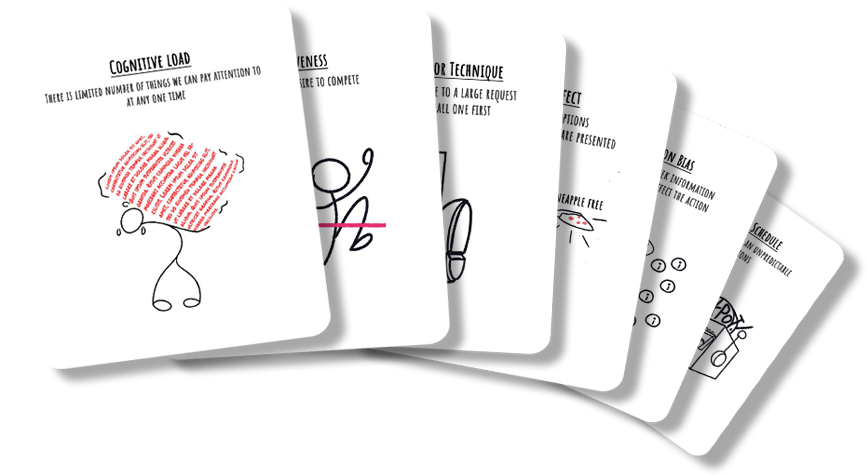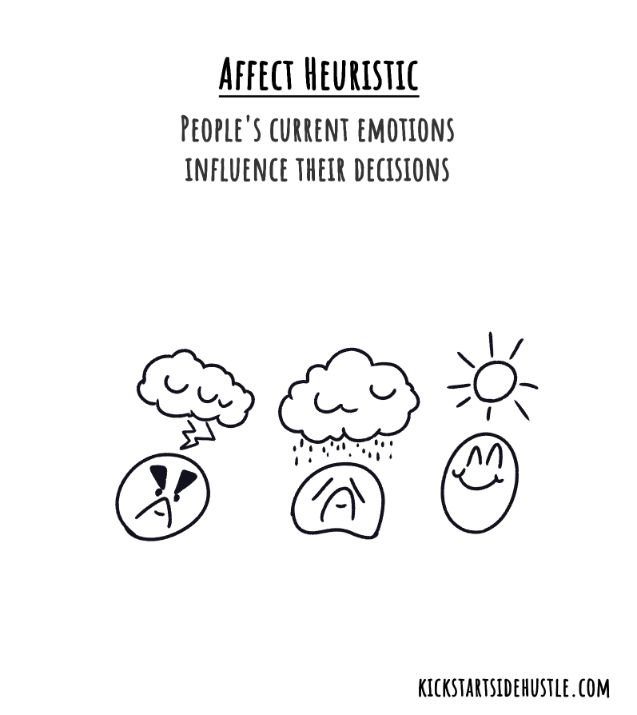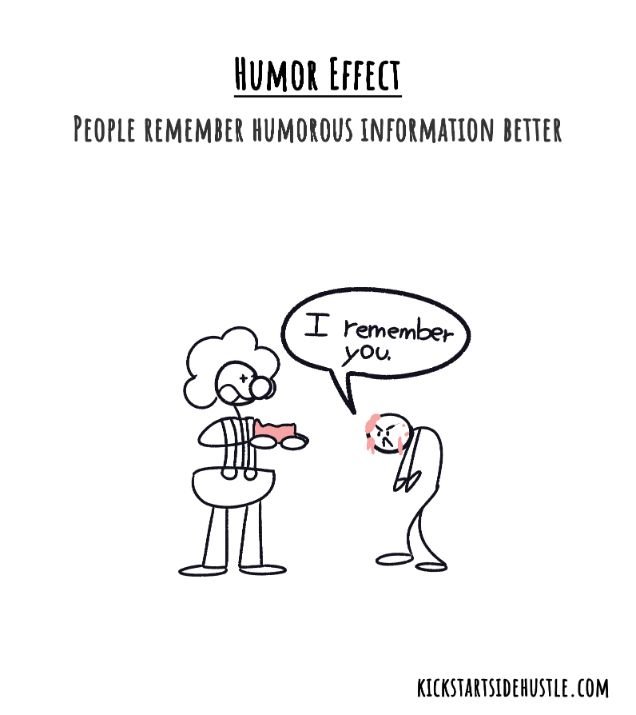
7 Cognitive Biases in Copywriting To Boost Your Sales By 6202% (8 min read)
Have you ever thought about why a good copywriter is so important in many businesses? A good copy can bring a lot of profit, but do you know why some texts work better than others? The answer: Marketing Psychology principles aka "cognitive biases".
Copywriters use a lot of tricks to attract their readers. Those are strategies that help businesses develop and attract more potential customers. To tell the truth, good texts increase income. How? Take a look at the list below.
1. Storytelling Effect
People like stories. This simple statement has more in it than you could imagine. You know why? Because it’s 100% true. People prefer reading interesting and engaging stories than boring (though accurate) facts. Fascinating stories attract more attention than a whole tome of statistics and numbers. Specialists and experts may appreciate the latter, but the masses will choose stories.
There was research in 2009, when Rob Walker bought 200 objects from eBay for a total sum of $129. He then asked 200 authors to create a story for each object. Rob then sold those 200 objects with included stories on eBay again. He sold them for $8000. That's a 6202% increase in value!
2. The Zeigarnik Effect
People are better at remembering not finished tasks. The Zeigarnik effect is important for copywriting, as it's about continuity. The effect is also connected with the curiosity gap (being attracted by the unknown).
A good piece of copywriting should be engaging. It should catch the curious eye of the reader, and then guide it right to the end of the text. How to do that? Simply try not to explain everything in one paragraph. You need to write an engaging copy, not a summary for school, right?
- “Next…”
- “In a moment, I will tell you about…”
- “Last but not least…”
- "Moreover..."
- "Next..."
These and alike are phrases that help you keep the proper level of attention in your readers. They may be called “linkers,” and they not only make your text more interesting but also more readable. Your pieces of writing will:
- be easier to digest,
- have better structure,
- make the readers stay longer on your website.
The texts with well-implemented linkers will generate more traffic. Google boosts sites where people tend to spend more time. A simpler design and structure of a text is more attractive than complex phrasing. It's especially crucial in longer texts.
The “TL;DR” principle may discourage your readers pretty quickly. Stating the "milestones" of the texts will give them a sense of progression through it. For example, "last but not least" means that there is one last piece of information left (although it's still important).
3. Cognitive Load
The problem of cognitive load is that people are able to digest only a limited amount of information at a time. If there is too much of it at a time, they will probably skip or simply forget the rest.
In copywriting, it basically means that nobody wants to read walls of text. The same applies to the “meat” you put in there. What you can do to avoid it?
- Divide texts into paragraphs - 3-4 lines maximum.
- No more than 80 characters per line.
- Use headlines for the selected parts.
- You can also play with bold and italic to highlight crucial words and pieces of information.
Such a strategy will make your pieces of writing much more “digestible”. They will be simpler to understand and remember.
This phenomenon is connected with chunking. People prefer when what they see is put into groups, or – if you like – “chunks”. Those portions of information are easier for the human mind to get a grasp of. Chunking nullifies the harmful effect of cognitive load. As the result, your texts become more attractive and engaging.
4. Speak-Easy Effect
Words that are easier to say, are more trustworthy than those more complicated. The more difficult it is what we read or hear, the less reliable we think the person or the text is.
For example, a sentence like:
- “Much attention has been paid lately to the increase of criminal activity in our city”
can be phrased like that:
- “People are getting more and more interested in the increasing crime activity in our city”.
Simpler language tends to sound sincerer, too. "Put," "give," "take," "get," "say," – these are the most basic verbs you can use to convey your meaning in an easy way.
Read an in-depth analysis by Ryan McCready and see how texts with easier words sky-rocketed with their popularity. His findings suggest that the most popular of all were the texts on the level of a 6th grader (that is – a middle schooler).
In other words, when you create your copy, try making your words sound simple and easy to understand even for a 12-year-old child. Besides the Zeigarnik effect, and all the other biases described above, this will greatly boost your ratings.
There are also some programs which help you make sure that your texts are easy to read. One of such is the Hemingway app. Its features include identification of longy sentences, highlighting difficult phrasing, and grading the overall level of the text.
5. Curiosity gap
The unknown is often very tempting. People tend to strive for never-ending development. Although not everybody likes learning new things, it is still better to know than stay without that knowledge (especially, when you are the one without it while the others may already know it!).
The curiosity gap in copywriting is simply there when you leave some space for... being curious. Use it to your advantage by making your readers uncertain about what you have for them.
It is a great way to design a newsletter, for example. A good newsletter should be delivered regularly to the subscribers. They may be sure that whatever is there for them, they will have it the exact day next week (or month). You can take advantage of that fact. Leave your readers curious about the next issue of your newsletter.
For example: “Next week: why Bitcoin got so much popular?”. Guess many financially oriented viewers may be dying to know the answer to such a question, right?
A sneak-peak is another good example of the curiosity gap in practice. Show them just a bit of what you're going to write about next, and they surely sign up to learn the rest.
Look at the Joanna Wiebe's example. An increase in the number of clicks to 927% only because they hid the price for the Gold plan. The users needed to click to sign up to reveal the price (she calls it the "curiosity clicks"). Although it has nothing to do with copywriting, it shows how our desire to know works in practice!
6. Affect Heuristic
People buy emotions. That's a simple fact. Affect heuristic is about „selling” these emotions. When customers are upbeat they tend to show about 24% more receptiveness than usually.
Research has shown that people prefer choosing more positive options, which they associate with less risk. The participants saw two descriptions of the same company. Option A depicted it in a positive way, while according to option B, the whole “picture” was much more negative. More people (above 80%) decided to buy that company's shares after reading description A. Only 9% preferred option B.
This bias may seem to be quite natural, yet some are still unaware of that phenomenon. Copywriting should present things from their brighter sides. They should focus on how their readers may like it. All this to evoke positive emotions and make your readers think that you are right. However, don't do it on purpose, or it will look unnatural. Just minimise the parts where you mention some drawbacks of what you are describing.
7. Humor Effect
As we’re speaking about emotions, being happy is one of the most desired feelings. A good copywriter should know that their texts should not only inform, but also sell stuff. Emotions get sold pretty well. According to research, up to 30% of all ads are based on humorous situations. This is because humor is so good at grabbing our attention.
Humor can greatly widen your audience. This is something every good copywriter should be aware of. A good copy should not only be interesting and sliced into digestible chunks of text; it'd be the best if it could make them laugh.
The humor effect says that people are better at remembering things that they find funny.
There goes the principle of 3, which is somehow connected to the Zeigarnik effect. The best results with humor are when in the list of three positions (whatever they are) the last one is somehow comic.
For example, you're describing unusual ways to become popular on the Internet. You may suggest becoming a photographer and uploading photos on Instagram. Then, you can give an idea of learning to play a guitar and recording covers of popular songs on YouTube. As the last option here, you take a strange TikTok profile (a truly hilarious one) and use it to show some strange, but funny way of becoming an Internet “star.” Many of your readers should remember at least that very last option. Only because it involved a humorous factor.
 There’s more…
There’s more…
Those were only some of the most popular biases useful in copywriting. There are many more of such phenomena out there. It is good to have that knowledge to make yourself more successful in the market. Writing converting texts is important for marketers, so it’s good to have such tools at your disposal.
Get your
"oh sh*t, this might work for us!"
moment in the next 5 minutes
Viral marketing case studies and marketing psychology principles that made hundreds of millions in months or weeks
In the first email:
- a step-by-step strategy that made $0-$30M within 9 weeks with $0 marketing budget (case study)
- cheatsheet (PDF) of 10 biases in marketing used by top 2% companies
Other than that:
- weekly original content that helps you STAND OUT by providing more perceived value with less work

(You won't find it anywhere else)

Explore Cognitive Biases in Marketing






